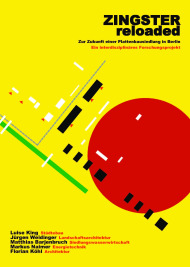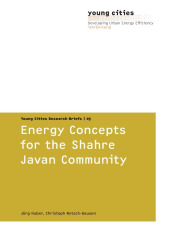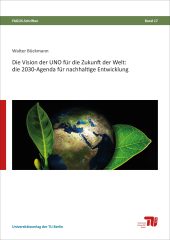Zingster reloaded : Zur Zukunft einer Plattenbausiedlung in Berlin
Ein interdisziplinäres Forschungsprojekt
Editor: Luise King, Florian Köhl, Markus Naimer, Jürgen Weidinger, Matthias Barjenbruch

Format: 21,0 x 29,7 cm
Publishing year: 2015
The objective of the project was to transform this large mono-functional housing estate into a sustainable, functionally diverse and socially blended urban district with innovative and sustainably organized technical infrastructure systems. The project brought together urban designers, landscape architects and architects as well as specialists in urban water management and energy.
While the urban designers focused on differentiation and diversity, on the integration of workplaces and communicative uses, on problems of cautious densification and on a redefinition of public spaces, the architects were concerned with reconstruction measures and potential new uses, well-defined intervention in the existing stock of concrete-slab prefabricated housing, transformation of environment, integration of new housing types in existing construction as well as new construction.
The landscape architecture is creating functional open spaces differing in their character and atmosphere, while urban water management and energy specialists, on the other hand, sought to develop concepts of responsible use of resources.
The chapter on energy technology presents decentralized solar hot water heating systems, heat recovery from wastewater, radiant heating and controlled ventilation, and shows that CO2-free heating is possible in large housing estates.
As for urban water management, its aims are water conservation, water, nutrient and energy recycling and preservation of local water resources. The project presents solutions for dealing with rainwater, grey and black water, for instance an area-integrated black water system, which is able to recycle energy and nutrients.
The particular quality of this project consists in the synthesis of the research results of all involved disciplines. The authors build up an example setting for the transformation of a monofunctional dormitory town district into sustainable mixed district.



